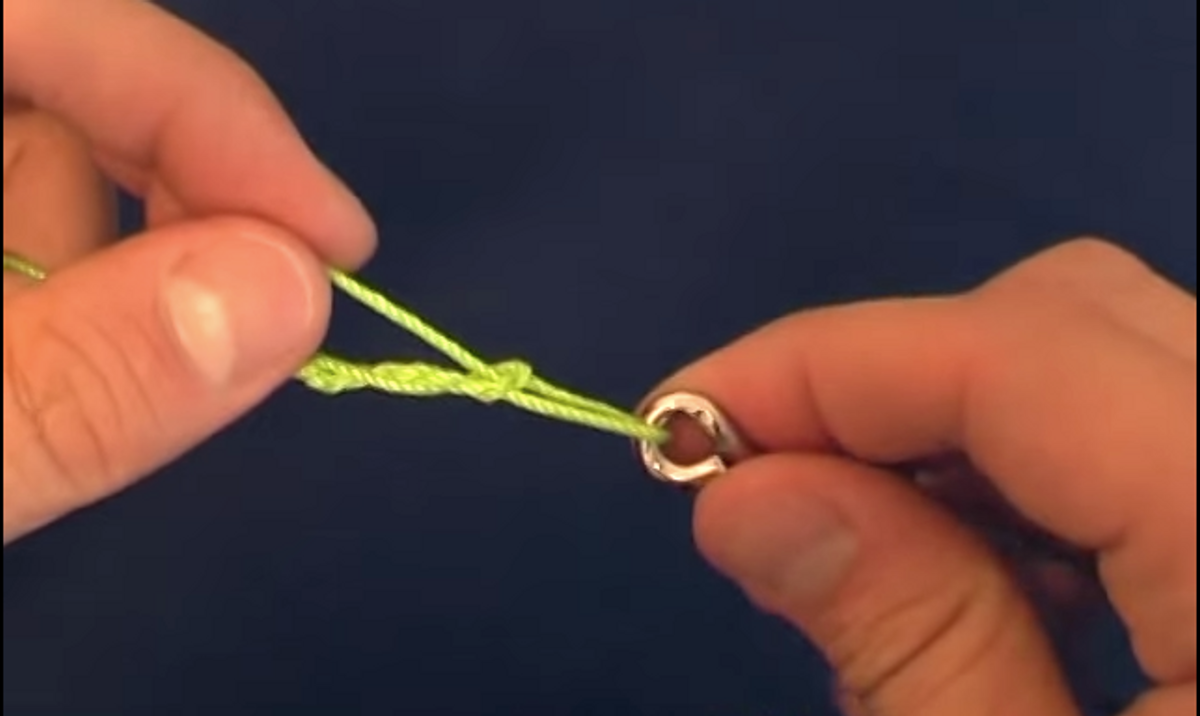5 Fishing Knots You Need To Learn Today To Be A Better Angler
By and large, anglers are extremely detail oriented people. We pay extremely close attention to our rods, reels, and lures to both maximize the number of bites we generate and minimize the number of missed opportunities. There's a reason for that level of detail. Our rods, reels, and lures are integral components of a successful presentation, and if one isn't chosen correctly, a poor day on the water is often the result. All too frequently though, anglers get the rod, reel, and lure selections correct, yet still have trouble hooking and landing fish – something that could be caused by using the wrong fishing knot.Fishing Knots don't get nearly the attention they deserve. The knot is what connects your lure to your line. If it fails, nothing else matters. Despite that fact, anglers routinely tie the same old fisherman's knot that they learned from their grandfather for every presentation with little thought towards how it will affect their success.Knots are a lot like lures in that there are different choices that excel under different conditions, and there is no "one knot that is best for all situations." Additionally, as anglers become more diverse in presentation, often using superlines, fluorocarbon, and monofilament all in the same day, knots are becoming even more important.To speed up your learning curve, we've put together this list of 5 essential knots, when to use them, and how to tie them.
1. Palomar knot
The Palomar knot is the workhorse of the bass angler's fishing knots. It is easy to tie, consistently regarded as one of the strongest knots, and can be tied using pretty much any line size or type. The Palomar is an ideal knot for tying on jigs, Texas-rigs, smaller crankbaits, frogs, or pretty much any normal line-to-lure connection.
2. Improved Clinch
Another great general purpose knot, the improved clinch has long been a staple in many anglers' arsenals for a good reason – it is really easy to tie. Despite being slightly weaker than the Palomar, the improved clinch is a great choice with bigger baits, where a Palomar becomes difficult due to having to pass the bait back through the loop. Big, deep diving crankbaits, swimbaits, and spinnerbaits are prime candidates for an improved clinch.
3. Loop Knot
When tied correctly, the loop knot allows a bait to slide freely around the loop. That is a huge plus for presentations that benefit from slack line. Topwater poppers, walk-the-dog style baits, and jerkbaits are the primary presentations that benefit from a loop knot. The loop allows the bait to move more freely, thereby maximizing the action of the lure and producing more strikes.
4. Snell Knot
The snell knot is the ultimate knot for flipping and pitching. It is super strong, and can be tied relatively easily with heavy fluorocarbon and braid. Although its strength is certainly a huge factor, the snell knot really shines when you set the hook. Because the line is actually secured to the shaft of the hook and not the eye, setting the hook with a snelled hook actually imparts a rotational motion on the hook, driving it into the fish's mouth.If you're flipping a big weight this becomes vitally important, as big weights can actually pop a fishes mouth open on the hookset, sometimes preventing a traditional EWG hook from penetrating. A snell knot prevents that by forcing the hook to rotate into the jaw regardless of your weight size.
5. Albright Knot
Braided superline is becoming more and more commonplace for good reason. It's super strong, sensitive, and it lasts forever. Unfortunately, superline is also really visible, which can result in fewer bites in clear water or around pressured fish. For that reason, anglers are often adding a 2 – 4 foot leader of fluorocarbon to their braided lines, minimizing visibility. The Albright knot is the ultimate leader-to-mainline connection.Although it takes some practice to tie, the Albright is far superior to all other leader knots because it offers no drop-off in strength due to not having any pinch points. Not only is it strong, but the Albright is also slim enough to pass through line guides without trouble, and tends to hold up to cover extremely well.
Updated May 12th, 2020 at 10:36 AM CT


